Apple's News+ subscription service threatens to kill the open web's surveillance advertising clickbait model of fake news engagement to save journalism. Why would Apple want or care to do that? Here's a look.
Services as software: Apple News+
Apple has portrayed News+ as an effort to save journalism. Lauren Kern, the editor-in-chief of Apple News, stated that the company is "committed to supporting quality journalism, and with Apple News+, we want to celebrate the great work being done by magazines and news outlets."
That might sound a bit over the top, but Apple has a strong commercial self-interest in not only keeping original news and storytelling alive but in making the photojournalism and wordcraft behind it successful in their own right.
Print journalism certainly does appear to need saving. According to data from Statistica, global magazine print revenues in 2015 were $86.07 billion. Next year in 2020, revenues are predicted to fall to $67.56 billion. That nearly $20 billion drop represents a precipitous decline in income as consumers increasingly ignore old fashioned, paper publications.
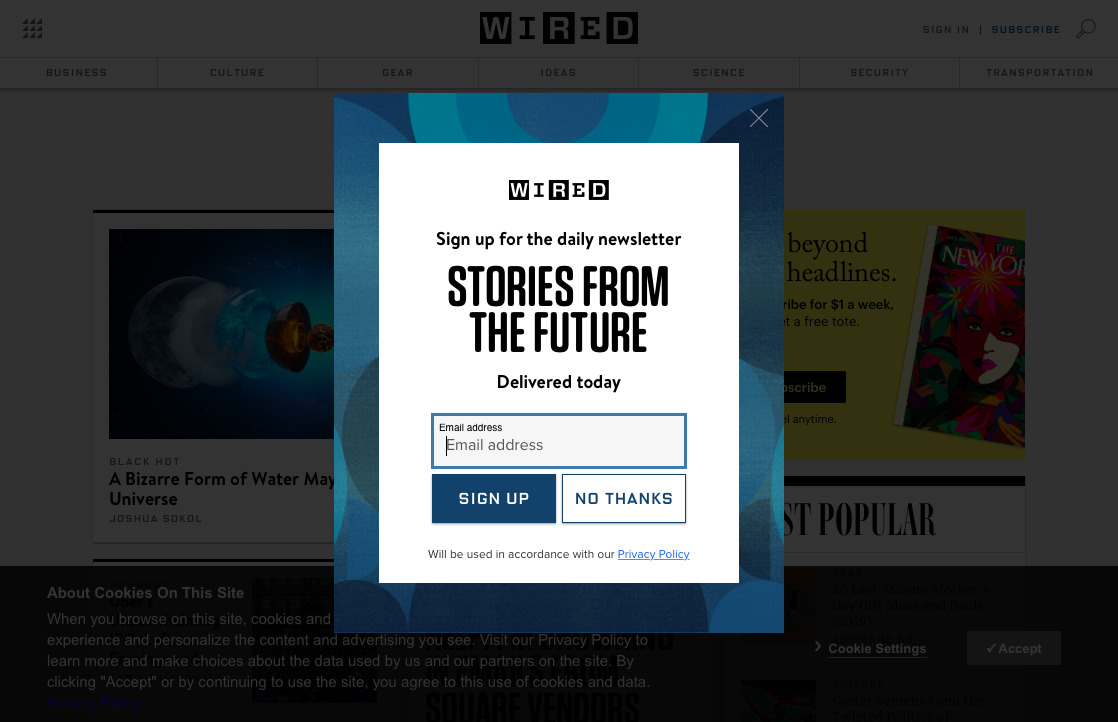 On the Web, Wired delivers the typical cluttered, annoying experience of free content desperately trying to optimize you as a product to sell to advertisers.
On the Web, Wired delivers the typical cluttered, annoying experience of free content desperately trying to optimize you as a product to sell to advertisers.News+ pretty clearly aims to drive Apple's hardware sales with exclusive content the same way that Apple Arcade aspires to in gaming. It also shares the potential to deliver high margin Services revenue at the scale of Apple's vast installed base. And for every dollar Apple earns, it generates roughly the same amount to directly fund the content producers creating News+ material.
Unless you're an Apple shareholder, should you care about the money involved and who collects it? Absolutely you should.
If you prefer to pay for the kind of food you personally like rather than lining up at an ad-supported soup kitchen's feed trough, you should also support a system centered on innovation in art, design, technology and fashion that caters to your needs rather than an economy centered purely on innovation in advertising, where you pay nothing to line up as the product to be sold to advertisers.
News+ lets you vote for the production of high-quality content with your dollars. The alternative is more "getting what we've been paying for" on the "free" web. In a system where everything is "free," there's no freedom to vote for the kind of products you want.
Prior to iPhones, mobile operators were largely subsidizing handsets to the point of being free, erasing any drive or even ability for phone makers to build very innovative products. When Apple introduced a far more advanced product at a higher price, it attracted so much attention that it began to drive massive profits that funded relentless improvements. And as the price of high-end iPhones has pushed upward in tandem with interest in higher quality phones with better, larger displays and more advanced cameras, the advancements Apple can introduce have similarly increased.
The Netflix of Texture
Apple's News+ service is based upon its reportedly $485 million acquisition of Texture, the "Netflix of magazines." It was initially developed as a joint venture of old media firms quite obviously trying to preserve their own relevance in an increasingly digital world: Conde Nast, Hearst Magazines, Meredith Corporation, News Corp, Rogers Media, and Time Inc.
It first launched in 2012 as "Next Issue," and relaunched as Texture in 2015. That year, the New York Post reported that the service had generated $15 million in subscription revenues for the magazines.
While Texture's subscriptions were reportedly growing by 50%, the new revenues that publishers were seeing from Texture's digital magazine distribution were effectively nothing compared to their print revenues. And they were in particular nothing when compared to how fast magazines' print revenues were declining.
Texture's $15 million contribution per year was absolutely inconsequential compared to the industry's overall losses of around $4 billion per year. Magazines sales were engulfed in flames and Texture was like a spritzer bottle.
That explains why Texture's owners were willing to hand over control to Apple in exchange for at least $145 million in payments over the first year and then at least $240 million in the second and third years. Apple promised to increase its digital revenues by an order of magnitude, and then kick in another 50 percent on top.
That was fantastically better than publishers could do on their own, even if they were also leaking out a story about how terribly unfair it was that Apple was expecting to build a new business capable of generating enough revenues in total to be earning as much for itself as the publishers were getting paid for their content.
Like Spotify and Netflix, magazine publishers really expected Apple to do all the work of lining up customers, selling them on a new payment model, and processing their subscriptions but then expected to get— not just an equitable share of the revenues generated— but virtually everything. Of course, if Texture's media owners knew how to build an attractive digital magazine subscription service that generated hundreds of millions of dollars, they wouldn't have been stuck at just $15 million in revenues after three years of trying, and wouldn't desperately need the help of a company like Apple.
Apple examined the opportunity and decided that it could make News+ work. It appears that Apple is assuming most of the risk of failure. If users don't pay for News+, Apple will effectively be subsidizing the digital magazine service. But even if News+ doesn't make much money, it would still provide Apple with a valuable service that could help it sell iPads and Macs and make it that much more likely that subscribers would stick to buying iPhones in the future. That's worth a lot to a company that makes most of its money from premium hardware sales.
Having a massive installed base of affluent users gives Apple the luxury of being able to take risks that others can't. Google, Microsoft, and Samsung couldn't even sell music, have struggled to sell games, and certainly aren't trying to sell magazines. For Apple, iTunes music and App Store games have already been spectacular home runs. News+ could be next.
Apple's rough road to News+
Apple previously tried to help print periodicals find a digital market in the App Store with iOS 5's Newsstand in 2011, which was just a simple collection of publishers' own apps selling whatever form of digital magazines they wanted under their own subscription model.
Publishers, notably Conde Nast, did a terrible job at creating digital representations of their existing magazines, commonly dumping out a huge collection of static images that were slow to download and clumsy to navigate. News Corp also delivered a turd sandwich in producing The Daily, a brand new but totally boring digital magazine aimed at iPad users. It failed to attract enough subscribers to sustain the venture.
Initially, magazines including Wired announced pretty healthy results in selling digital issues on iPad, only to watch as their subscribers fell off rapidly within the year. One of the problems was that publishers were trying to charge significantly more for their digital downloads. A Wired subscription to the mailed-out paper version cost around $1 per issue, but despite the cheaper nature of digital distribution and no physical printing or use of paper, the magazine was asking $4 per digital copy from iPad users.
How well would iTunes have worked out if the price of digital album download had been set by music labels who demanded 4x the price of a CD, at a time when they were competing against free copies of their music on Napster?
Additionally, most magazines were offering nothing that took any real advantage of the dynamic, animated nature of being on an iPad. Publishers also had trouble serving up their own issues reliably, or delivering them in a form that caught readers' attention.
Rather than being anything similar to the casual, familiar experience of paging through physical magazines, trying to access their digital issues often felt more like being a librarian trying to track down some old report on microfiche. Why do that in our new digital era where content finds you?
The free news alternatives
On the web, Yahoo, Google, and Facebook have worked to create proprietary portals where users can get a "free" news feed for nothing apart from the cost of being tracked and monitored, and where the majority of the technology involved in delivering the news isn't going to journalists or photographers or news organizations, but to the developers of sophisticated interest and demographic tracking.
That's turned the original lightweight, open nature of the WWW into a complex system where most of the data driving news isn't content, but rather just spyware designed and optimized not to deliver news and information, but paid messages from anyone who has money to anyone who can line up an audience of consumers.
Google, Facebook, and other advertisers are generating huge revenues, but aren't splitting much of their huge wealth with news publishers. They are not even in the news content business. The revenues they collect are not from consumers paying for information. They are from advertisers looking to exploit audiences.
 Google News delivers
Google News delivers That means the people paying for the system have interests that are not aligned with audiences getting their "news" for free. Why not just serve up fake news, which is far cheaper to produce than real content, based on the expensive nature of journalism, reporting, and storytelling?
Saving journalism by paying for it
With Newsstand, Apple was enabling publishers to collect their own revenues. Across the board, publishers failed to deliver a good product at a fair price that iOS users wanted to pay. However, the failure of Newsstand was largely blamed on Apple.
Steve Jobs' stated intention of helping publishers go digital with iPad was mocked and ridiculed by the media as if it were a grievous misreading of the market and an embarrassing engineering error that Apple should have felt ashamed about attempting, rather than being an issue of publishers not being able to create digital versions of their publications and deliver them in a form that enough readers would find worthwhile to pay for in a series of expensive subscriptions.
In 2015, Apple replaced the Newsstand folder in iOS 9 with its Apple News app. The new app took a more active role in formatting existing news content into a consistent form Apple could manage and deliver at scale. Apple greatly reduced publishers' ability to screw things up, resulting in a clean, consistent, attractive product that began to attract a significant readership.
The greatest remaining problem was that the only monetizing option in News was display ads, which didn't contribute sustainable revenues for Apple or its publisher sources, largely because Apple wasn't serving up enough ads. News+ hopes to address that the same way that Apple Arcade pays for game development: by attracting paying subscribers.
News+ in the model of Apple Arcade
News+ splits its subscription fees among Apple's partner publishers. The program not yet open to anyone who wants to publish, likely because Apple is first working to establish that News+ can work. In the future, it may enable publishers outside of the original Texture partners and the other publishers it invited into its News+ program, notably including LA Times, the Wall Street Journal and the Toronto Star, to plug their content into News+.
Right now, outside publishers can only publish into the free Apple News and still only monetize via ads, or alternatively sell their work as an app or subscription service on their own. That makes News and News+ essentially identical to the model of Apple Arcade alongside the independent games and game subscriptions that exist outside of Arcade in the App Store.
Like games for Arcade, News+ intends to be available across devices. In the future, we may see more video-centric news and features that adapt to viewing on Apple TV. It already includes rich online content from The Cut, theSkimm, Grub Street, Vox's Highlight, New York Magazine's Vulture, and TechCrunch's Extra Crunch.
But right now, the focus is on mobile iPhones, the larger canvas of iPads, and the convenience of being perusable on Macs, thanks to the UIKit on macOS frameworks Apple used to deliver News and Stocks in Mojave last summer.
Also like Arcade titles, News+ features layouts and design that make its content stand out from the generic web. The new format includes support for magazines with animated covers, and makes photography pop with animations. That could change the perception of digital magazines on iPad, particularly for photo-rich legendary periodicals including National Geographic, The New Yorker,Rolling Stone, Sports Illustrated, TIME, and Vanity Fair.
It's notable that News+ includes current and former issues of Wired, the quirky tech magazine that launched in 1993 during the Golden Age of Apple and then asked us to "pray" for the beleaguered brand in 1997, before it stumbled into the digital tablet age and is now in a position where it could use some saving from Apple.
Unlike Arcade, News+ is currently limited to the United States and Canada. But if Apple can build it into a platform that works to sell premium periodical and online content as a paid subscription, we could move past the surveillance advertising of the web and have rich access to high-quality content without incessant and privacy-abusing ads— another feature News+ has in common with Arcade.
News+ in the model of Apple Music
So can Apple News+ save journalism? Consider how Apple previously "saved music." In 2001 when iPod appeared, music was being commonly stolen via file trading sites like Napster that took artists' work and made infinite copies that devastated the recorded music industry's CD business and devalued the entire nature of listening to recorded music.
Rather than buying and savoring an album, everyone could simply amass a hard drive full of ripped tracks, and listen to a few seconds of any imaginable song while paying nothing back into the system that organized the people who created, perfected, and packaged music for sale. People were not just ripping songs, but trashing the value of spending any time appreciating the work that went into making music or videos. "File sharers" effectively lost the appreciation for music as an art form.
iTunes, and Apple Music today, rebuilt that appreciation, linking songs with album art and encouraging listeners to support and even follow artists, recommend their work to friends, and enjoy music as an art form worthy of paying to support. Some of the efforts Apple made to add value to music have worked, such as album art and searchable lyrics, and some have been duds, including iTunes+ bonus features and the Ping social networking.
Take a look at the historical mix of revenues from recorded music globally during Apple's tenure. When iPod launched in 2001, virtually all revenues were coming from physical media, mostly CDs. Apple dominated the rise of digital downloads in iTunes, then pivoted to become a major player in streaming with Apple Music. The entire time, Apple not only broke even on downloads and streaming, but also made major hardware profits on sales of iPods, then iPhones, and most recently from sales of Apple Watch, AirPods, HomePod, and Beats— all four of which are largely driven by music listeners.
Apple had a commercial interest in "saving music" that closely parallels its interest in having high-quality photojournalism and writing for its installed base of iPad and Mac users. The music of talented artists, like the wordcraft of storytellers, creates a positive, informative, entertaining, and enlightening experience for audiences to enjoy that they can be willing to pay for.
For iTunes, rather than just creating a downloads archive of user-generated songs or ripped-off bootleg tracks, Apple worked to create a sustainable market for high quality, professionally performed and recorded music in iTunes. Napster and other sites did the opposite, skimming "free" music and trying to sell the customers who came for "free" content as eyeballs to advertisers.
Today, it's Google and Facebook that are skimming headlines and giving people glanceable summaries of "news" that boil issues down into blurbs designed to generate maximize outrage, and therefore "engagement," which strings people through a series of advertising messages those sites are paid to inject into their news streams.
That "fake news" business model has devalued the work that goes into producing real journalistic content, and has effectively equated real reporting with crafted propaganda designed to simply sway political opinions or attack and vilify groups of people.
Facebook isn't investing in journalism. It's investing in new ways to categorize people in order to sell their attention to groups who want to shift their behavior. Google has long operated a News product, but that, like YouTube and all of the company's other efforts, serves to simply dangle out the least real content possible in order to string people along through a series of paid messages. This is pretty clearly destroying society far worse than the music stealing of twenty years ago.
By providing a real business model for credible, journalistic storytelling— and particularly the time investing, in-depth type of content that takes effort to produce— News+ isn't just claiming to save the world from facile streams of tawdry outrage, but is also creating something of value that intelligent people will be drawn to. And intelligent people generally have money.
News+ is another iTunes-like business in that it links people who create real content— whether music, apps, games or written work and photography— with people who want to enjoy real content and are ready to pay for high-quality work. As the middle man, Apple takes a cut of this business. But more importantly for Apple, it creates something of real value that is uniquely available on its platforms, giving its high-end, intellectual, and affluent audience another reason to buy an iPhone rather than a commodity Android that is just as good at scrolling through Facebook, or Google News headlines or WeChat but has nothing like News+.
Apple's mixed performance as a curator
The fact that Apple can curate high-quality content doesn't necessarily mean that it will. If its publishing partners just crank out junk that's not clearly better than free stuff that appears on the web, there won't be much more reason for today's subscribers to pay for News+ than there was back in 2011 for Newsstand apps.
Apple should be curating and enhancing content, and working to create visibility for talented work. Today's News app— along with the news feed within Apple's Stocks app— offers rather hit and miss curation that often promotes stuff that is embarrassing drivel, and clearly not any better than what's available for free on the web. That's most noticeable in the news coverage of Apple itself. Unless you specifically subscribe to better sources of Apple content, News app defaults to a bizarre mix of "Apple is doomed" bloggers and third rate financial entertainment sources.
Why does't Apple better promote the work of people who write interesting things about the company itself? Above Avalon, AnandTech, Ars Technica, Apple 3.0, AppleInsider, Asymco, Daring Fireball, iMore, Six Colors and other sources of good content are all News channels that users have to favorite manually. The defaults for news about Apple itself seem like they involve some sort of contractual obligation to Yahoo. Apple should rethink some of its defaults.
The level of frivolity that gets promoted in News is also high. There are entire "stories" that are nothing more than a dozen paragraphs discussing some non-notable tweet or two in sassy language— those "people are saying" and "the Internet isn't having it" pieces— that get promoted as top News articles. This sort of fake news devalues that very thing Apple should be building. On the other hand, a primary purpose of News as a way to promote News+ subscriptions highlights that Apple is so far working to balance free content with valuable paid content.
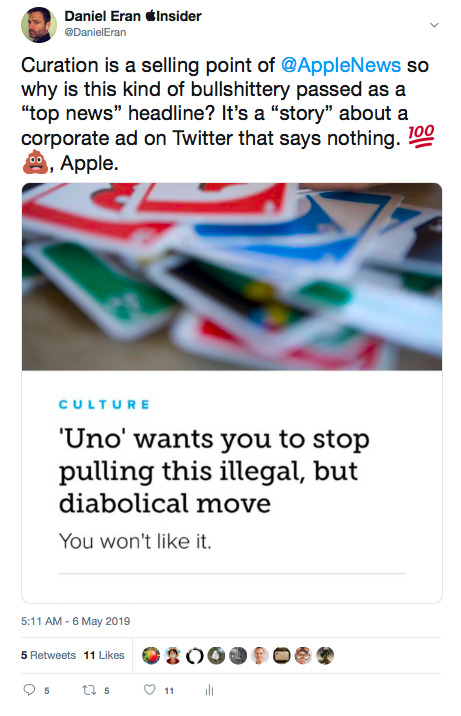 Apple's News curation is a mixed bag
Apple's News curation is a mixed bagThe parallels between news articles and video games keep surfacing: Apple can only do so much to push publishers or studios to deliver their best work. But by creating a new subscription tier of higher value titles next to the free clickbait stories of News and the free iAP games in the App Store, it may be successful in moving beyond minimal value content to deliver a new class of intellectual exercise and effort that we'll want to pay for.
In parallel, Apple is also creating another Service that appears to be mostly— or virtually entirely— entertainment content that the company has produced itself. Will Apple TV+ successfully turn Apple from being merely a curator of other's talent, as it has been in iTunes and the App Store and as it plans with Apple Arcade and News+, into a producer of its original content with Apple TV+? The next article takes a look.
 Daniel Eran Dilger
Daniel Eran Dilger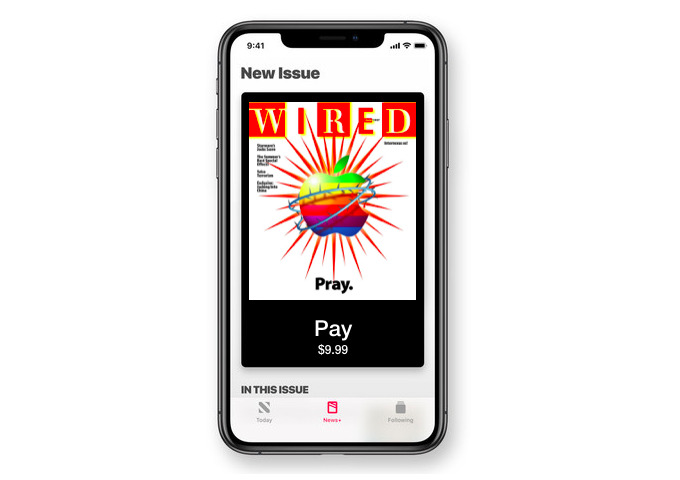
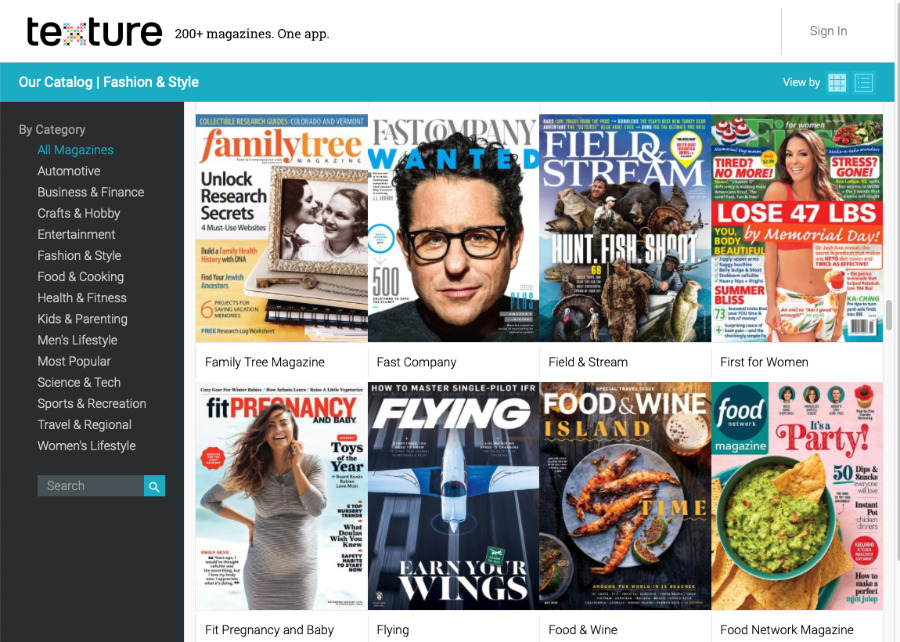
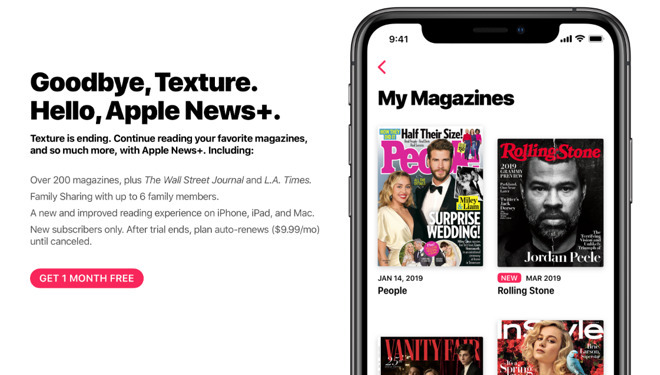

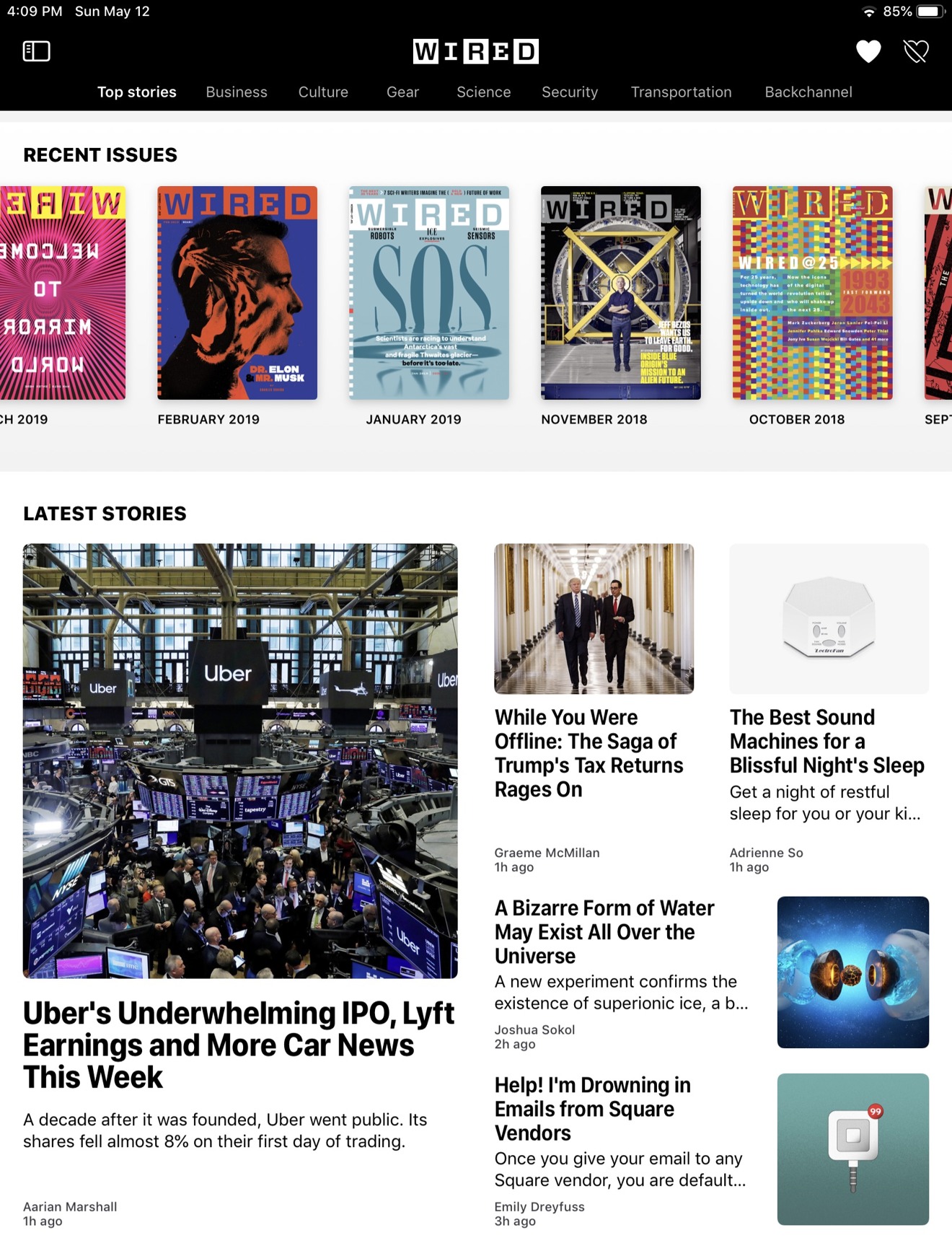
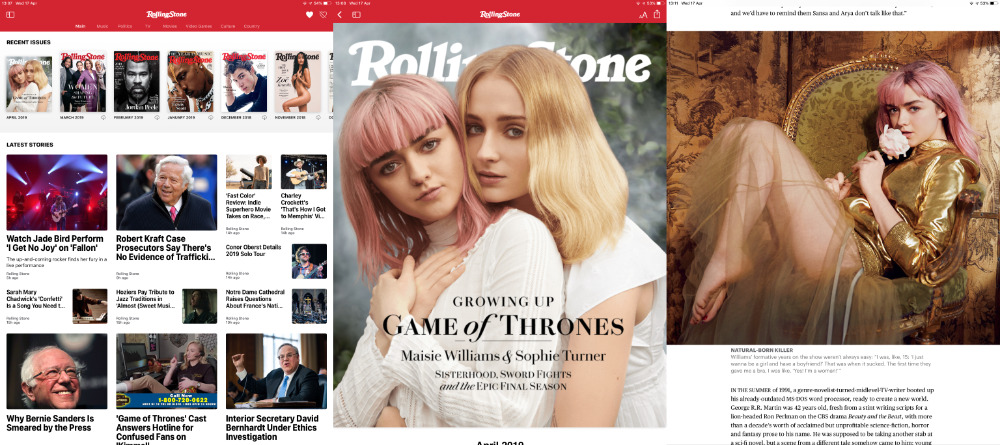
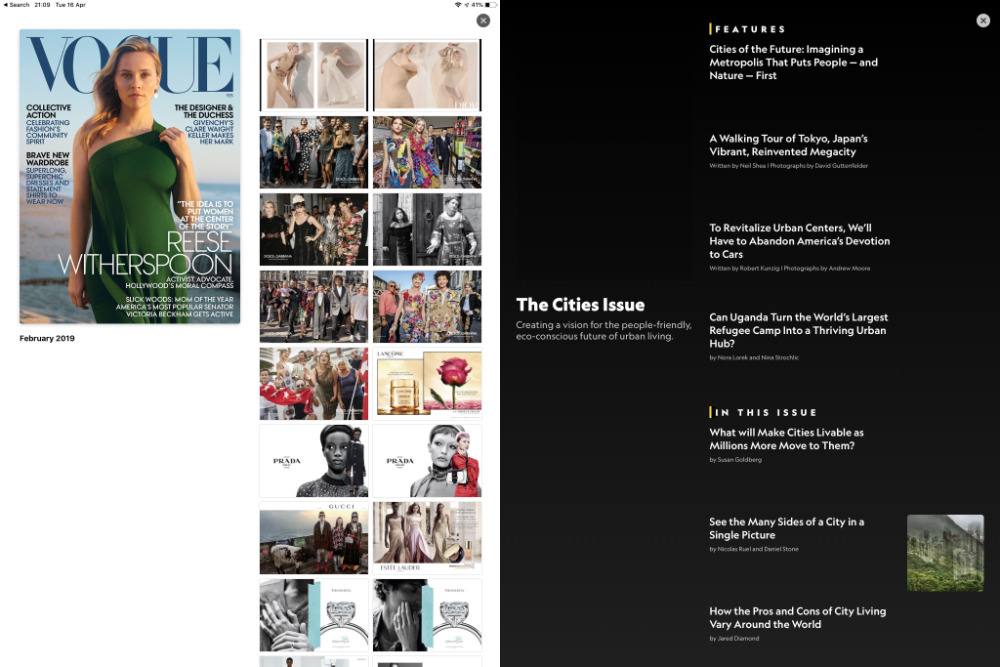








-m.jpg)






 Wesley Hilliard
Wesley Hilliard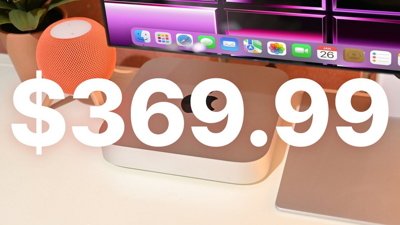
 Christine McKee
Christine McKee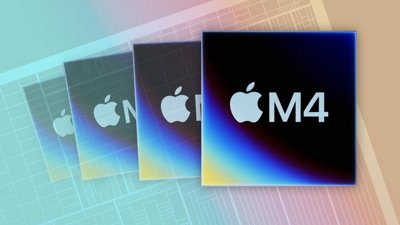
 Malcolm Owen
Malcolm Owen
 William Gallagher
William Gallagher
 Andrew Orr
Andrew Orr






-m.jpg)




71 Comments
Apple saved music with iTunes because the ripping of music was a known illegal activity. And the price worked out by Steve Jobs was a good price. Ninety nine cents per song made sense versus being forced to buy full albums. Win/win for customers and artists.
Magazines are so lame these days they can't be given away. And that is when they do it legally online. Most are political and their politics is very unattractive. So who wants lame politics dressed up in a fancy graphical cover or with the NYT logo? And Apple is likely to exclude political opinions it finds unacceptable, which means it will exclude what half the population wants. I don't think Apple will exhibit a hearty appreciation of the wide open expression of ideas from across the spectrum. More likely it will be like Facebook and Twitter which censor voices that don't fit the liberal template. If Apple does that with Apple News it will not be a big success or even a good product.
I really despise the term "fake news" because it is too often used as chaff to deflect from any "news" that does not fit certain people's agendas and need for constant affirmation and adoration. Real "fake news" if we agree that it's a thing is no different than "propaganda" and we should just call it propaganda. As far as Apple doing anything to quell the proliferation of propaganda, I think it can help, but it cannot solve the problem. Propaganda plays on biases and the best way to suppress biases is to broaden one's experiences and exposure to information that allows a broader understanding of issues and life in general. So yes, if Apple News+ gets more people to learn about more perspectives and experience a much broader range of views and basic information, it can help. But it's the same old horse and water problem, so it is going to be a difficult challenge to get people out of their Foxholes and looking at more than just what they want to see.
If Apple News is presenting CNN, MSNBC and the major news networks, and then censoring others, they are in fact directly promoting Fake News, since those outlets are the major sources of fake news. So how exactly will Apple 'save journalism'?
Censored new? no thanks.
I’m not interested in political correct(ed) information and other ‘moral’ corrections that make the world a safe place for children so they can grow up and buy more Apple stuff.
I don't think Apple saved music, I think music tycoons tried to kill it by suing the public for downloading and asking way to much for the music in the first place and paying the artist way to little in the process.
Buyers were buying the same song multiple times on different formats, effectively being extorted by the record companies.
When freed by the internet lots of buyers took the chance.
iTunes didn't remove the option to illegal (and sometimes legal) download (music) at all. NZB search nowadays is still the best option to find music and get it for free.
Lots of people just do that.
On the other hand, lots of people buy music because they choose so. The reasons vary, but I think its mostly because of fairness; a culture change because artist began addressing the public about it (after it became clear that suing the public and being employed by a record company wasn't such a good idea).